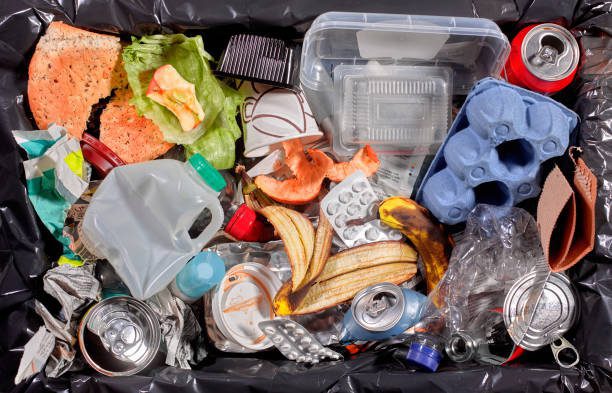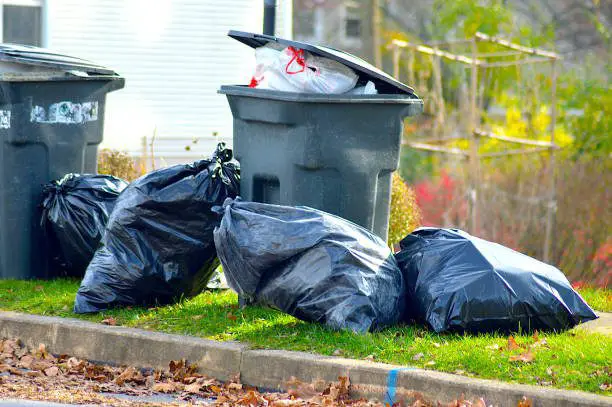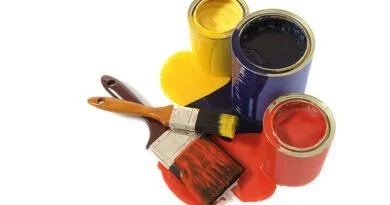Ways To Generate Income From Consumable Waste
The term “consumable waste” describes the materials and disposable goods produced by human consumption that are thrown away after use. Food waste, packaging, single-use items like batteries and water bottles, and disposable cutlery are a few examples. If not adequately handled, this form of waste not only adds to the depletion of natural resources but also presents serious threats to the environment and public health.
Methane and other greenhouse gases are released by landfills, where the bulk of usable waste is disposed of, contaminating the air and accelerating climate change. Additionally, many single-use items, like plastic straws and bottles, may take hundreds of years to disintegrate, harming ecosystems and animals.
Beginning with people making more thoughtful decisions about the things they use and buy, consumable waste may be reduced. Reducing food waste and taking simple actions like using reusable containers and shopping bags may make a significant difference.
By establishing laws that promote sustainability and recycling, such as charging for single-use bags or providing incentives for utilizing reusable containers, governments and corporations may also contribute to the reduction of consumable waste.
Ways To Generate Income From Consumable Waste

In today’s world, trash reduction and waste management are critical challenges. However, did you know that certain waste products may generate income? Here are some strategies for turning consumable waste into money:
(1) Composting
Food scraps may be composted to provide a rich soil amendment that can be sold to farms and gardeners. The simple process of composting turns food and yard waste into useful soil additives.
You may lessen the quantity of garbage transported to landfills, cut waste disposal costs, and produce a rich, organic soil amendment that will help your plants by composting consumable waste.
Here are some recommendations for composting food waste:
Pick the best compost container: A compost container may be as simple as a mound of composting materials in your yard or it might be something you buy.
Composting in a bin provides a number of advantages, such as keeping your pile confined, making it simpler to flip the pile, and conserving heat to hasten the composting process.
Collect the necessary ingredients for composting, including food scraps, coffee grounds, eggshells, paper, and yard debris. Meats, dairy products, fats, and pet waste shouldn’t be composted since they might attract bugs and produce unpleasant aromas.
Maintain a balance in your compost pile: Composting calls for a ratio of green and brown components, such as food waste (such as leaves and paper). Use two parts brown ingredients to one component of green materials as a general rule of thumb.
Your compost pile should be wet but not soggy, and it should be aerated often to guarantee adequate oxygen flow. Water and aerate your compost pile.
The pile may be turned using a piece of composting equipment or by simply raking it. Harvest your compost when it has turned into a rich, black substance that resembles soil. This might take a few weeks to many months, depending on the size of your compost pile and the items you add.
Read Also: Ways To Generate Income From Commercial Wastes
(2) Recyclability
Paper, plastic, glass, and metal are just a few of the recyclables that may be sold to recycling businesses to be turned into new goods. Why Recycling Consumable Wastes Is Important. By recovering materials and turning them into new products, recycling tries to reduce the quantity of the garbage that is dumped in landfills.
In addition to assisting in environmental preservation, this procedure also conserves natural resources and lowers greenhouse gas emissions. Consumable waste recycling is an essential component of recycling.
Products that are regularly used, such as food and beverage containers, paper goods, and packaging materials, are referred to as consumable waste. Recycling these items helps preserve natural resources like oil and forests while reducing the amount of rubbish that ends up in landfills.
Why It’s Important to Recycle Consumable Wastes?
Reduction of Landfill Garbage: As landfills rapidly fill up, recycling works to cut down on the quantity of waste that is dumped there, protecting valuable land and natural resources.
Saves Natural Resources: When compared to the creation of new materials from raw materials, the manufacturing of new materials from recycled items utilizes less energy and resources. This promotes the preservation of natural resources like oil and trees.
Reduces Greenhouse Gas Emissions: Compared to the manufacturing of new materials from raw materials, the manufacture of new materials from recycled items produces fewer greenhouse gas emissions. By doing so, the carbon footprint is decreased and the impacts of climate change are lessened.
Creates Jobs: The recycling sector generates employment opportunities and economic gains that support regional economies. Recycling helps to conserve natural landscapes by lowering the demand for new landfills, which in turn helps to protect ecosystems and natural landscapes.
How to Participate in Consumable Waste Recycling
Reduce Your Trash: Cutting down on your waste production is the first step in becoming active in recycling. This may be accomplished by using fewer single-use plastics and actively choosing to utilize reusable bags and containers.
Recycle Properly: Organize your recyclables into the appropriate bins, and make sure everything is dry and clean before you recycle.
Support Local Recycling Programs: Promote expanded recycling initiatives in your neighborhood and participate in curbside recycling programs to show your support for local recycling initiatives. Encourage people to participate in the recycling effort by educating them about the value of recycling.
(3) Repurposing
Waste materials may be recycled to create brand-new, valuable items. Although “upcycling” and “recycling” are often used interchangeably, the former is a more inventive and long-term solution. Upcycling utilizes the current materials to produce new and usable items as opposed to recycling, which entails dismantling objects into raw materials to build new products.
Food and drink containers and other consumable garbage may readily be upcycled into a wide range of usable products, such as furniture, home décor, and household goods. Following are some inventive methods for recycling edible waste:
Reuse Glass Jars: Glass jars from culinary products like pickles and sauces may be cleaned and used again as planters, candle holders, or containers for food storage. Plastic bottles may be converted into planters by cutting them in half, adding dirt to the bottom, and then planting seeds for a quick and environmentally responsible planter.
Make Jewelry from Beverage Can Tabs: You can make bracelets, necklaces, and earrings from the beverage can tabs made of aluminum. Wine corks may be used to create crafts like bulletin boards, coasters, and even bathmats. Coffee sleeves may be turned into ornamental coasters, wallets, or even wall art by stitching them together.
Consumable trash may be reused in creative ways to cut waste and preserve resources. Additionally, it gives people a creative medium through which to show their commitment to sustainability. By upcycling, we not only lessen trash but also promote sustainability and environmental protection.
You may establish a new revenue stream by recycling garbage into brand-new goods. For instance, you may repurpose old clothing to create brand-new, fashionable attire.
Read Also: Way To Generate Income From Composite Wastes
(4) Market waste products
Coffee grounds are one example of a waste product that may be sold as a by-product to businesses for use in fertilizers, cosmetics, and other items. A clever method to get money from waste is to sell the byproducts of edible waste. Waste by-products may be used as fuel, compost, fertilizer, and raw materials for industrial manufacturing.
Selling waste byproducts may decrease landfill trash, generate cash, and save resources, among other advantages. Several instances of how edible waste may be converted into byproducts for sale are shown below: Compost: Organic waste, such as leftover food and yard trash, may be converted into compost, which can then be sold to farmers and gardeners as a soil supplement.
Fuel: Biomass fuel, which may be burnt as a source of energy in commercial boilers, can be made from biodegradable waste, including paper, cardboard, and yard waste. Fertilizer: Farm animal excrement may be converted into fertilizer and sent to farmers.
Waste items like aluminum cans and plastic containers can be recycled to create raw materials, which are then sold to producers to be used in new goods. Selling waste byproducts is not only a wise business move, but it also helps maintain environmental initiatives. Garbage-to-byproduct initiatives may help lessen our overall effect on the environment by cutting down on the quantity of waste transported to landfills and preserving resources.
Additionally, towns and corporations may generate cash by selling waste byproducts. Communities may promote local economies and lessen their reliance on fossil fuels by funding waste-to-byproduct projects.
(5) Waste-to-energy
Through procedures like anaerobic digestion or incineration, some waste kinds, such as organic waste, may be transformed into energy. After then, this energy may be sold to generate income. The process of creating energy from waste materials is known as waste-to-energy (WTE). Waste products that cannot be recycled or composted are transformed via this process into useful energy, usually in the form of heat or electricity.
Consumable waste, which includes food waste, paper, and plastic, is a category of garbage produced by regular home activities. Consumable garbage used to be often dumped in landfills, where it would take years for it to break down and create methane, a powerful greenhouse gas.
Advanced technologies are used by WTE plants to transform consumable trash into energy. The following stages are often included in the process: Waste is gathered and classified into many types, such as paper, plastic, and food waste. Recycling and compostable materials are removed during the waste’s processing.
Incineration: To produce heat and steam, the residual trash is burnt at high temperatures. Energy Production: Heat from incineration is converted into electricity or steam that may be utilized for heating or other uses. When compared to conventional landfills, WTE facilities provide a variety of advantages.
They provide renewable energy, cut down on greenhouse gas emissions, and lessen the quantity of the garbage that is dumped in landfills. Additionally, WTE plants may boost local economies and create employment.WTE facilities do, however, have several disadvantages.
Emissions from the incineration process, such as dioxins and carbon monoxide, may be harmful to the environment and human health. WTE plants must adhere to stringent rules and directives to reduce emissions in order to counteract these effects.
A potential approach to lowering the quantity of garbage dumped in landfills and producing renewable energy is waste-to-energy. While the process may have certain disadvantages, with appropriate design and regulation, these effects may be reduced, making WTE a more sustainable choice for handling consumable waste.
(6) Recycling E-Waste
Technology is evolving quickly in the fast-paced world of today, and e-waste generation is rising along with it. Electronic trash (or “e-waste”) is the term used to describe abandoned or end-of-life gadgets like computers, cellphones, TVs, and other home equipment.
The issue of e-waste is made worse by the fact that a substantial amount of it is made up of consumables like batteries and printer cartridges that are difficult to recycle and often wind up in landfills.
E-waste has a substantial negative environmental effect. Much electrical equipment contains hazardous substances including lead, mercury, and cadmium that may seep into the groundwater and soil, polluting such resources and endangering human health.
E-waste also uses energy in the form of power and gasoline for transportation, which adds to greenhouse gas emissions. It is essential to raise awareness of the value of e-waste recycling and to prod people, companies, and governments to adopt eco-friendly activities in order to solve the expanding issue of e-waste. Some actions that may be done are as follows:
Proper disposal: Consumers may bring their outdated electronics to licensed e-waste recyclers, who are outfitted to properly disassemble and recycle e-waste while reducing environmental damage.
Reuse: Consumers may prolong the life of their old electronics and cut down on the garbage they produce by giving or selling them to those who can utilize them.
Recycling consumable trash: To lessen the amount of garbage that ends up in landfills, manufacturers may create and promote recycling programs that are ecologically beneficial for consumable products like batteries and printer cartridges.
Government regulations: Governments have the authority to impose rules that mandate producers assume responsibility for the items they produce at the end of their useful lives, including the ecologically sound recycling of hazardous materials and the safe disposal of poisonous substances.
A mix of individual, corporate, and governmental efforts are required to solve the urgent problem of increasing e-waste and consumable waste. We can safeguard the environment and make sure that future generations may live in a sustainable world by taking the necessary actions to properly dispose of, reuse, and recycle electronic trash.
Although it’s an increasing issue, electronic trash may also be profitable. You may recover priceless commodities like gold, silver, and other metals by recycling electrical garbage.
(7) Organic Agriculture
Growing in popularity over the last several years as a technique of agricultural production is organic farming. The utilization of edible waste products as a fertilizer for the soil is one distinctive feature of organic farming. Alternatives to conventional chemical fertilizers that are both affordable and ecologically beneficial include these waste materials.
Compost is a typical waste product used in organic farming. Food scraps, yard trash, and other organic materials are combined to create compost, which decomposes into a rich soil supplement. Compost is a fantastic source of nutrients for plants and may help the soil’s structure, which will promote water retention and root development.
Manure is another waste material that may be used in organic gardening. The three basic minerals for plant growth nitrogen, phosphorus, and potassium are abundant in animal dung. Manure is a fantastic technique to recycle waste from animal husbandry and may also assist to enhance the structure and fertility of the soil.
Organic farming also makes use of green manures. These are crops that are grown with the intention of being added to the soil as fertilizer. Green manures may enrich the soil with nutrients and organic matter while also assisting in the control of weed development.
In organic farming, food waste may also be utilized as fertilizer. This includes leftover fruit and vegetable trash as well as other foods like coffee grounds. Food waste may assist to enhance soil structure and includes vital nutrients that plants need to develop.
Utilizing waste materials as fertilizer in organic farming might not only be beneficial to the environment but also advantageous economically. These waste materials may replace costly chemical fertilizers since they are often easily accessible, affordable, and available in large quantities.
Growing crops with consumable trash is a clever and environmentally responsible practice. Organic farmers may enhance soil fertility and plant development while reducing the amount of garbage that ends up in landfills by reusing waste goods.
In conclusion, trash management is a significant problem, but it may also be a source of cash if handled properly. You may contribute to trash reduction and gain income at the same time by recycling rubbish into a fresh product or energy source.
Read Also: How Smart Glasses Are Changing The Gaming Industry



